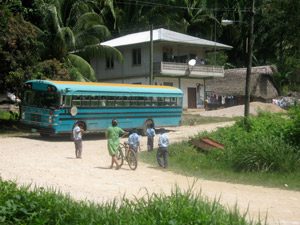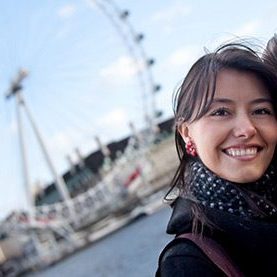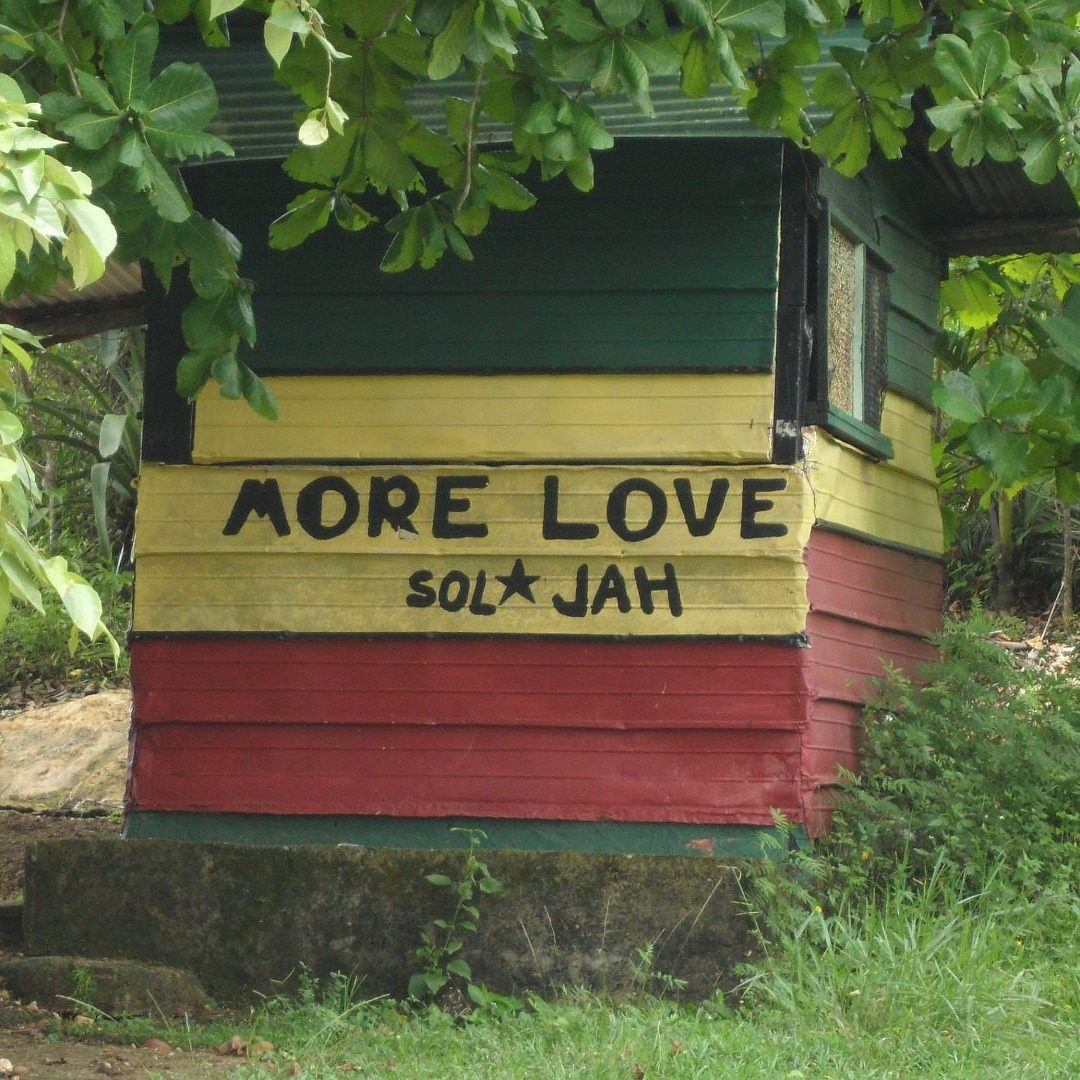 Belize offers one couple a wondrous journey.
Belize offers one couple a wondrous journey.
My last night in Belize felt like it should be my last night on earth.
After a week of relative isolation from the rest of the world, this final night was the pinnacle: The only guests on the two-acre Moho Cay, my girlfriend Stephanie and I slept in a sort of half-tent, half-cabin contraption that peeked over the Caribbean Sea on stilts.
The waves rocked below us, and a breeze swept through our open curtains, cooling the residual stickiness of the daytime tropical air. Stepping out onto our deck in the night, I saw nothing but a black ocean in every direction and a spatter of stars above me. No boats, no lights from the neighbouring islands, no planes flying overhead. It hardly seemed possible that I was on the same Earth I was on the week before, that a place so remote existed and would continue to after we left it forever.
I could tell from my first minutes in the Belize City airport what a unique country I had just entered. Nestled between Guatemala, Mexico and the Caribbean Sea, Belize feels like it inhabits an entirely different era than its neighbours. Having liberated themselves from British rule rather recently (1981), Belizeans still speak English as their official language, along with the Kriol, Spanish and Mayan dialects. The resulting culture, a mixture of what you’d expect in the Caribbean and Central American countries, emanates through the country’s largest airport (which is approximately the size of the Greyhound Bus Station in San Francisco). Mayan women sell native crafts and spices alongside aggressive bartenders who insist you try their rum punch, while reggae plays in the background.
“High Season” at Indian Creek
We spent our first two nights in the lodge at Indian Creek, a farming community with a population of about 630 people. The lodge has its own landing strip on the property, a several-acre stretch of meadows and freshwater lagoons owned by Belize Lodge and Excursions. The company owns four lodges in southern Belize, and their trips typically include a few nights at different locales. As first-time travellers to the area, we thought it would be a nice, relatively simple way to get a feel for a country that’s not especially known for its gay-friendliness—in fact, homosexuality is still officially outlawed.
At the lodge’s front door, we were greeted by a woman in traditional Mayan dress (we soon learned this wasn’t a kitschy hotel gimmick, but rather the way many local women dress). She had a tray of fruit punch and moist towels for us. The lobby (which was also the bar and dining room) was wood-floored, simple and rustic but elegant, with bright tablecloths. It was also completely silent and desolate. Our hostess explained, in flawless though heavily accented English, that we were the only guests for this week, which was typically “high season.”
With no fellow travellers to drink with and no television, Stephanie and I retired early, just after finishing what would be a typical dinner for the week: vegetable soup, salad, homemade cornbread, sautéed veggies and rice pudding for dessert (don’t be freaked out—we asked for strictly vegetarian food). We wandered up a stone path to our thatched-roof cabin, where we slept in gorgeous, wood-framed, mosquito-netted canopy beds, covered with rose petals upon our arrival. For the first time, I was hit with the sense of being completely on the edge of nowhere; as I stepped out to our balcony overlooking the lagoon I saw nothing but blackness and stars. We had no working phones, no one to hear us scream. It turned out we did have wireless Internet in one corner of the lobby, but we didn’t discover that until right before we left.
After a rooster from a local farm woke us (late) for breakfast, our tour guide, Nathaniel, picked us up in a van for our first adventure. We took a small paved road past miles of thatched-roof houses, all with an array of wandering chickens and plantain trees in the front yards.
Our first stop was Lubaantun (“Place of Fallen Stones”), an ancient Mayan trading centre that was “discovered” by Thomas Gann when he blew it up with dynamite in the early 1900s. Today you can still see remnants of the ball court—a grassy field flanked by stone structures—where apparently they played really intense games of handball and sacrificed the loser. Standing between piles of ruined stone steps with fallen rocks scattered around them, I took a deep breath, closed my eyes and tried to imagine all the people who had stood here before, how deep and ancient the history was, hoping some vague feeling of sacredness would wash over me. It didn’t really work. Birds sang overhead, the sunshine assaulted my pasty skin and beautiful new plants were growing all over the ancient structures: new life making peace with its ancestors. Lubaantun is still very much alive, just with new inhabitants.
After drilling Nathaniel with questions about the “sacrifices” (Stephanie and I found ourselves completely fascinated whenever any gory topic arose), we continued on our journey through more country roads, past a Mennonite community that looked just like the ones we’d find in the United States: horses, wagons, white men in long-sleeved dark shirts despite the horrific heat. Apparently, they’d migrated down from Mexico in the 1950s—another group of unlikely foreigners who found their home in this country. A bit farther down, we passed a cerulean school bus, which stopped to let out a small pack of bouncing, giggling, uniformed grade-schoolers in front of another thatched-roof house with chickens gallivanting in the front yard. The kids carried modern, American-looking backpacks adorned with American cartoon characters, and ran to meet their mothers, who were dressed in long traditional Mayan skirts.
We stopped at Blue Creek soon after and ate a simple lunch. Nathaniel had told us to bring bathing suits that morning, so with extra clothes in our backpacks we started on a mile or so hike, not sure what we were getting into and not really bothering to ask. Hiking in a foreign country is probably one of the greatest joys in life: Every single flower, berry, bird or rodent we came across felt incredibly exciting and new. One of the coolest things I saw was a huge, shiny green vine snake blocking our path. Careful to avoid actually hitting the creature, Nathaniel tried scaring it out of the way by tossing a branch toward it. It coiled a bit but barely moved, more annoyed than frightened. Nathaniel tried a few more times, eventually urging it up onto a bush, and we hurried past, just feet away from it.
Feeling a little like Indiana Jones as we continued our trek along the dirt path, we reached a rocky clearing overlooking Blue Creek, the open mouth of a cave gaping over the river. After we changed into bathing suits, Nathaniel gave us headlamps and life vests for our swimming tour of the cave. We followed him deep into pitch darkness, the sunny mouth of the cave obscuring into nothing, our weak little headlamps all we had to light the way. Nathaniel knew the route well; he’d memorized every section of shallow water or sharp rocks and warned us as we paddled behind him. We swam for about 20 minutes, getting closer to the rushing sound of a waterfall within the cave, which was amplified by the solid-rock acoustics. It would have been the perfect setting for a horror movie or survivalist action flick. Nathaniel suggested that we turn off our lamps for just one second, and it was truly stunning: Chest deep in water, with no light or reference point of any sort, I again felt like I was at the edge of the world.
Welcome to the Jungle
The next day, Stephanie and I continued on to the next lodge, Jungle Camp, accessible only by a motorized canoe ride through a landscape straight out of The Jungle Book: sunlight filtering through vine-draped trees, with the chirping of exotic birds as our soundtrack. Our guide and driver, Rosendo, told us that during the 150-minute ride we would cover about five miles. Animal life kept things interesting for part of the time; kingfishers, woodpeckers, the “Jesus Christ lizard” (who, like his namesake, scampers across the water upright on hind legs) and our favourite, the catbird (whose chirp sounds like a meow) made the trip feel certain no longer than 149 minutes. To keep us excited and awake, Rosendo told us about the tapir, the national animal of Belize, which looks like a small horse and can sometimes be seen drinking from the river. Sadly, no thirsty tapirs appeared that day, and we arrived at Jungle Camp with bad sunburns and unquenched curiosity.
After settling into the heavy rosewood lodge with some cocktails (our adorable 19-year-old bartender, Diego, made me what he called, in awkward English, “the panty ripper”), we talked with our new guide, Antonio, about what there was to do in the absolute middle of nowhere. Hiking, bird watching and a midnight canoe ride caught our attention; otherwise, there was plenty of alcohol and classic rock (the Jungle Camp crew are big Rolling Stones fans) in a lodge that was empty except for us. We made small talk with our bartender and guide and learned a little more about the country. They told us Mayan women don’t drink, period, and there are very few bars or clubs in the entire country where women hang out at all. We didn’t bother asking about lesbian bars. Almost everyone we met in Belize had never been out of the country, except to Guatemala; a few had been to southern Mexico. Most local people and lodge employees had been raised on farms and had never eaten in a restaurant, let alone stayed in a hotel, which explained the overly formal and scripted service we received. It was mind-blowing to consider how different our lives were—that a day spent with Diego’s family would be completely unimaginable to me, as would his spending a day typing on a computer in San Francisco. And yet, we both liked beer and singing along to the Rolling Stones.
Our morning hike produced no tapir sightings (a jaguar’s paw print in the mud was nearly as exciting), so after our dinner, eaten to “Let It Bleed” and “Sticky Fingers” (Diego’s choice), Stephanie, Antonio and I got back in the canoe for our after-dark ride, where we’d get to see nocturnal animals and perhaps an insomniac tapir. Riding in a canoe down Golden Stream by starlight is as romantic as it is spooky; I couldn’t think of anything more terrifying than falling into the pitch-black water and being devoured by whatever jungle creatures lurked below. Antonio lit our way by a floodlight, which at one point caught the glistening red eye of a crocodile floating before us. I gripped Stephanie’s hand and held my breath as it passed in front of us silently, searching for a midnight snack. A small snake with its head thrust up glided across the water just after, and, watching how my eyes lit up, Antonio mentioned that many local snakes were extremely poisonous. By the time you reached the hospital for antivenom, it was often too late—if they even had it. As Americans visiting an exotic foreign land, it’s all too easy to be ignorant of facts like this. What I saw as cool wild animals aren’t “neat and exciting” for the people who have to live among them without Western healthcare.
A Lovely Bunch of Coconuts
Each day pushed us a little farther from civilization. The last night brought us to a tiny island in the Caribbean Sea, more remote than any other place we visited, yet oddly familiar in the way that oceans are. They remind you that the entire world is connected together through saltwater and fish communities, that miles of nothingness is really filled by sparkly water and a hundred different ecosystems, that the eastward view from Moho Cay wasn’t all that different from the westward view from San Francisco and the water tastes about the same. What’s different is the sand. Caribbean sand is whiter and sparkles more, and is home to crawling lizards and baseball-size hermit crabs.
Around Moho Cay is a series of islands called the Snake Cayes, which are apparently inhabited by boa constrictors. We snorkelled just off the shore and, noticing the nearby island covered in palm trees and devoid of all human development, we decided to explore it. In bikinis and sandals, we stepped gingerly around fallen palm leaves and over monstrous, man-eating hermit crabs, our eyes scanning the island for anything scary. Dried up, brown coconuts littered the ground around us, their fresh, shiny green counterparts hanging out of reach. I wanted one.
We spent the next 20 minutes desperately trying to make this happen. Looking much like the apes in the beginning of 2001: A Space Odyssey, we tried every possibility imaginable to achieve a coconut to call our own, until finally, I saw it: fresh-faced babysitting casually on the ground, sparkling in the sun just a few feet from us, all cute and unassuming among her dried, crotchety, old neighbours. I kidnapped her and, back in my room, wrapped her delicately in my clothes and placed her in my suitcase.
A few days later I made the mistake of trying to eat her and found her flesh was hard and tough and her juice was sour. I composted her remains after one bite. Just like when you get your vacation photos developed and they’re a disappointment compared to your memory, my coconut turned out to be a weak memento of a powerful trip. Instead of the sweet exotic delicacy of my imagination, she was the everywoman coconut, just trying to survive.
Each sweltering day in Belize felt eternal, but now that our week was over it felt a little like it wasn’t long enough, and so much I wanted to do was out of reach. When you go to a Third World country for the first time, a tour company serves you a great sort of sampler plate of what the country has to offer. We were always safe, never had to make any stressful decisions for ourselves and never ran across any semblance of violence, misogyny or homophobia—and very few people who weren’t there specifically to serve us. While a tour company helps you get your bearings, don’t miss out on the adventures that can only come unplanned and unexpected.



